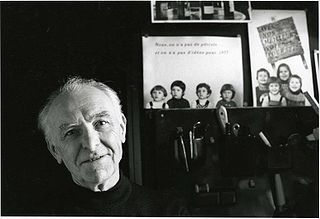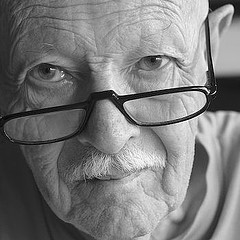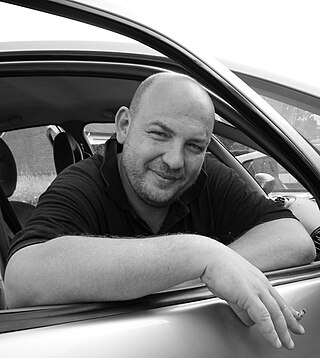
Robert Doisneau was a French photographer. From the 1930s, he photographed the streets of Paris. He was a champion of humanist photography and with Henri Cartier-Bresson a pioneer of photojournalism.

Jean-Philippe Charbonnier was a French photographer whose works typify the humanist impulse in that medium in his homeland of the period after World War II.

Willy Ronis was a French photographer. His best-known work shows life in post-war Paris and Provence.

Gentilly is a commune in the southern suburbs of Paris, France. It is the closest commune to Paris, located 4.1 km (2.5 mi) from the city center.

Graciela Iturbide is a Mexican photographer. Her work has been exhibited internationally, and is included in many major museum collections such as the San Francisco Museum of Modern Art and The J. Paul Getty Museum.

Clemens Kalischer was an American photojournalist and art photographer. He was born in Germany and immigrated to the United States.
Nina Berman is an American documentary photographer, filmmaker, author and educator. Her wide-ranging work looks at American politics, militarism, environmental contamination and post violence trauma. Berman is the author of three monographs: Purple Hearts – Back From Iraq; Homeland; and An autobiography of Miss Wish.

Janine Niépce was a French photographer and journalist. Her career spanned developing films for the French Resistance to covering the women's liberation movement in the 1970s.

The Maison Européenne de la Photographie, located in the historic heart of Paris, is a center for contemporary photographic art opened in February 1996.
Nikos Economopoulos is a Greek photographer known for his photography of the Balkans and of Greece in particular.
Homer Warwick Sykes is a Canadian-born British documentary photographer whose career has included personal projects and landscape photography.
Stephen Shames is an American photojournalist who for over 50 years has used his photography to raise awareness of social issues, with a particular focus on child poverty, solutions to child poverty, and race. He testified about child poverty to the United States Senate in 1986. Shames was named a Purpose Prize Fellow in 2010 by Encore.org for his work helping AIDS orphans and former child soldiers in Africa.

Henriette Grindat (1923–1986) was a Swiss photographer. She was a major female contributor to artistic photography, taking a Surrealist approach inspired by the literary trends of the post-war years.
Réalités was a French monthly of the post World War II era which commenced publication in February 1946, flourishing during the Trente Glorieuses, a period of optimism, recovery and prosperity in France after the austerity of Occupation, ceasing in 1978 in France, although the later US edition continued until 1981. Its articles ranged across French culture, economy and politics, and featured profusely illustrated stories of interest to tourists, especially those traveling to French colonies.

Robert Delpire was an art publisher, editor, curator, film producer and graphic designer who lived and worked in Paris. He predominantly concerned himself with documentary photography, influenced by his interest in anthropology.
Humanist Photography, also known as the School of Humanist Photography, manifests the Enlightenment philosophical system in social documentary practice based on a perception of social change. It emerged in the mid-twentieth-century and is associated most strongly with Europe, particularly France, where the upheavals of the two world wars originated, though it was a worldwide movement. It can be distinguished from photojournalism, with which it forms a sub-class of reportage, as it is concerned more broadly with everyday human experience, to witness mannerisms and customs, than with newsworthy events, though practitioners are conscious of conveying particular conditions and social trends, often, but not exclusively, concentrating on the underclasses or those disadvantaged by conflict, economic hardship or prejudice. Humanist photography "affirms the idea of a universal underlying human nature". Jean Claude Gautrand describes humanist photography as:
a lyrical trend, warm, fervent, and responsive to the sufferings of humanity [which] began to assert itself during the 1950s in Europe, particularly in France ... photographers dreamed of a world of mutual succour and compassion, encapsulated ideally in a solicitous vision.
Léon Herschtritt was a French humanist photographer. He won the Niépce Prize as a young photographer in 1960.

Les 30 × 40 or Le Club photographique de Paris was a photography club created in Paris in 1952 by Roger Doloy who was its president, with vice-president Jean-Claude Gautrand, photographer and author, and honorary president Jean-Pierre Sudre, professional photographer.

Éric Guglielmi was a French photographer, editor, and photojournalist.












